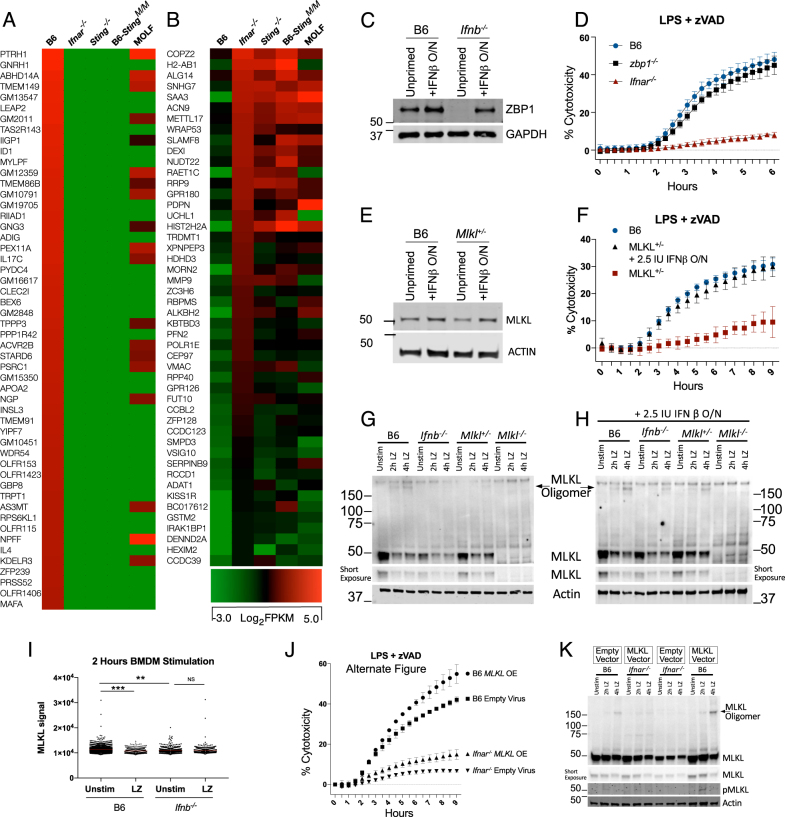Fig. 5.
Critical threshold of MLKL expression determines oligomerization potential. a RNA sequencing of resting BMDMs showing genes downregulated in Ifnar−/−, Sting−/−, StingMOLF/MOLF, and MOLF compared to B6 (b) and significantly higher in expression compared to B6. c Western blot of ZBP1 in non-treated or O/N 2.5 IU/ml IFNβ treated B6 and Ifnb−/− BMDMs. d Six hours time course of viability of LPS/zVAD treated B6, Zbp1−/−, and Ifnar−/− BMDMs. e Western blot of MLKL in non-treated or O/N 2.5 IU/ml IFNβ treated B6 and Mlkl+/− BMDMs. f Nine hours time course of viability of LPS/zVAD treated B6 and MLKL+/- BMDMs. g, h Non-reducing western blot featuring MLKL oligomers from BMDMs of indicated genotype treated with LPS /zVAD either non-IFNβ primed (g) or treated overnight with 2.5 IU/ml IFNβ (h). i High-content imaging of endogenous MLKL in PFA fixed B6 and Ifnb−/− BMDMs treated 2 h with LPS/zVAD. j, k B6 and Ifnar−/− BMDMs transduced with either empty virus or MLKL over expressing virus and analyzed for LZ-induced cytotoxicity (j) and non-reducing western blots for MLKL oligomerization and phosphorylation (k). All LPS/zVAD treatments were: LPS (10 ng/ml) and zVAD (50 μM/ml). In all cases of IFNβ pre-treatment (overnight or 1 h), the IFNβ is washed away before addition of experimental conditions. MLKL signal compared using student two tailed t-test: ns is non-significant (p > 0.05); *p < 0.05; **p < 0.01; ***p < 0.001. All western blot and kinetic cytotoxicity data are representative of three or more experiments. See related supplementary Figure 5

